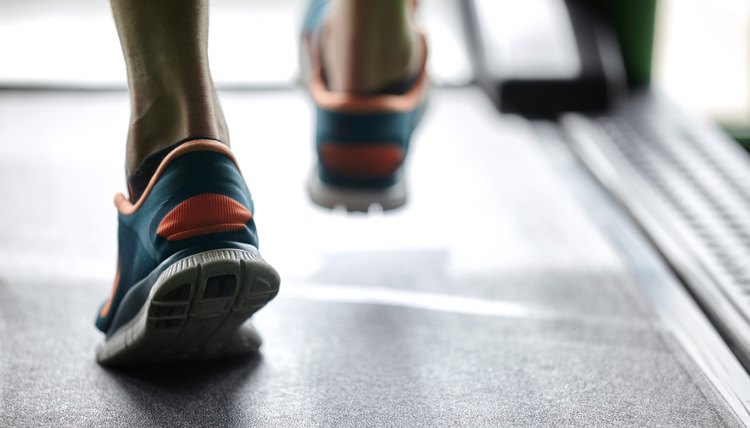Nordictrack T5.3 Specifications

Icon Health & Fitness, a large exercise equipment manufacturer, produced the T5.3 treadmill in 2010 for the NordicTrack brand. It was a bargain-basement treadmill with a low price and sparse features. The T5.3 is an adequate machine for average users, but it lacks the premium features required for more advanced workouts.
Walk Tall But Don't Run
The T5.3 treadmill is a relatively compact treadmill designed for in-home use. It is 70 inches long and 34 inches wide, but you should have an extra eight feet behind the treadmill and two feet of clearance on each side. Like many in-home treadmills, the T5.3 folds up vertically and has wheels so you can stow it away when not in use. The walking belt is 20 inches wide and 55 inches long. It is adequate for walking and jogging, but the length may not be enough for tall runners or those with long strides.
Make Haste Slowly
The T5.3 offers speeds up to 10 mph and an incline up to 10 percent. As with many features of the T5.3, these specifications are average for an in-home unit. Avid runners may want a treadmill that offers higher speeds and a steeper incline. The T5.3 has pulse sensors, but you have to grab the handrails to check your heart rate. You cannot use an optional chest sensor with this treadmill. You can plug your personal audio player into the audio jack on the console and listen to your music through the treadmill's speakers.
Hand Over Control
The T5.3 offers 16 built-in workouts -- eight distance and eight calorie-burn workouts -- which are easily accessible with the touch of a button on the console. The machine automatically changes the incline and speed at regular intervals throughout the workout. Keep in mind that the calorie calculation is an approximation, not an exact figure. The NordicTrack T5.3 also has a built-in iFit system. Purchase iFit workout cards separately and slide them into the card reader on the console. Each card holds eight weeks of workouts and the program changes the speed and incline at one-minute intervals. Unlike some other treadmills, the iFit system in the T5.3 cannot connect to your computer for access to online workouts.
No Guarantees in Life
NordicTrack has replaced the T5.3 treadmill with updated models. You can't purchase the T5.3 new any more, but you may find used units available for sale by owners or in secondhand fitness shops. Although the T5.3 comes with a 25-year warranty on the motor and a lifetime warranty on the frame, the warranty only applies to the original owner and does not transfer with the unit.
Writer Bio
Based in Austin, Texas, Jolie Johnson has been in the fitness industry for over 12 years and has been writing fitness-related articles since 2008 for various websites. She received her Bachelor of Arts in English and philosophy from the University of Illinois.
